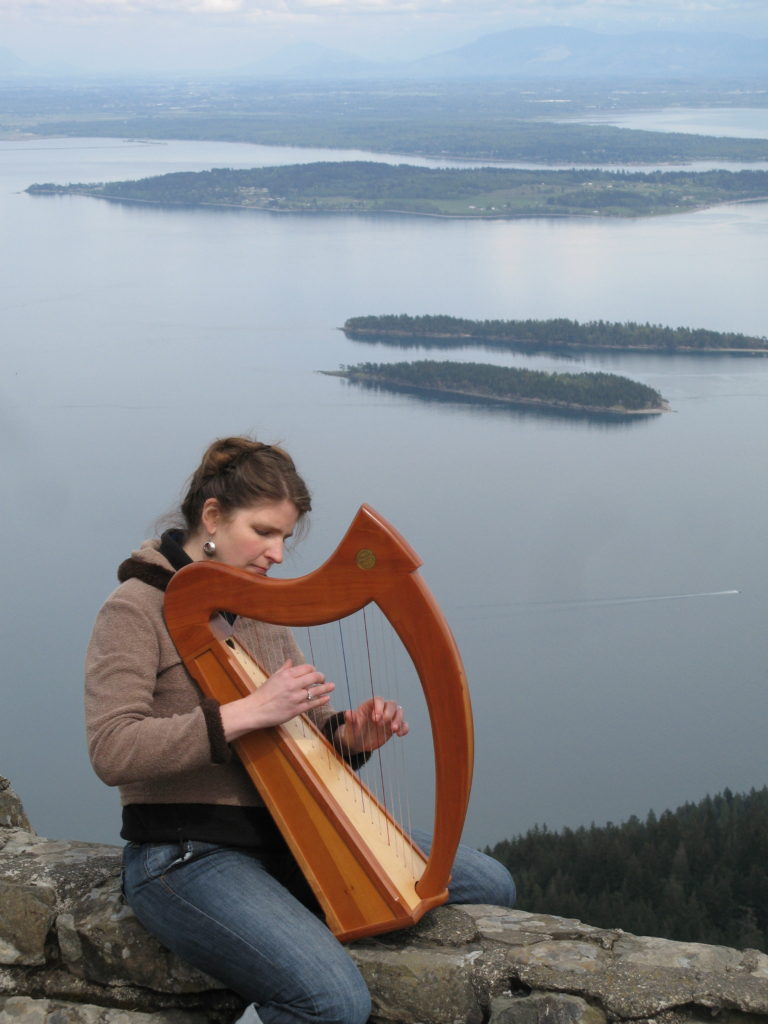Certain modes, intervals and tempos are favored when playing therapeutic music. Because the harp is one of the most resonant instruments, it makes itself an easy candidate in therapeutic settings. It is mostly made of vibration.
Often, I work with the songs of Hildegard von Bingen who, during Medieval times, frequently wrote modal music. A rare woman composer of the age, her songs are often in Dorian and Phrygian modes – starting the tonic of the musical scale on D or E, instead of C that we are typically used to. This can sound a bit ancient to our modern ears. Each mode is different from the next, depending upon where the half-steps and whole steps are. Combining modal scales with balanced intervals of 3rd, 4th and 5ths can be familiarizing, resonant in our bodies, and harmonious feeling.
Therapeutic musicians want to be mindful of the particular ailments of the patient we are playing for. Not everyone needs the same thing, and that person’s needs can also change in a short amount of time.

Recently, I played for a man suffering from cancer, who was originally from Peru. South American culture is rich in upbeat rhythms. When I arrived playing my small Irish harp (nothing like the Peruvian harp), playing airs and American folk songs, he wanted something much more peppy with quick chord changes. It is atypical for me to play music at a quick tempo at the bedside, yet that is what this client wanted. When I switched styles, he visibly cheered up. It is imperative to look at the patient and harmonize with what they need to hear. If their facial expressions show a displeasure, you would want to change what you are playing, maybe even stop. The quick-paced songs that this client wanted were reminiscent of his youth. That is what made him happy, and that is partially what therapy music is about. Its like a concert for one person with a positive intention.
In contrast, I played for a 95 year old woman who became very emotional when she heard the harp. Her shoulders slumped and she appeared melancholy. She had dementia. When I saw she was crying, I switched to a popular soothing musical choice for harpists – traditional Celtic tunes. She didn’t stop crying. Then, I knew she was experiencing feelings deep inside that couldn’t be expressed otherwise. With her more progressed dementia, she spoke in “word salad”, a sort of unintelligible garble. It must be frustrating and scary to not be able to communicate. Music was helping those repressed feelings be released. When her daughter asked her if she’d like me to stop playing, she said no. Her tears were a relief.
Having a positive intention behind the music is a good idea as a musician. Like any caregiver, it is wise to arrive with no agenda other than to care for the individual in the moment. If I am lucky, I may even improve their day!